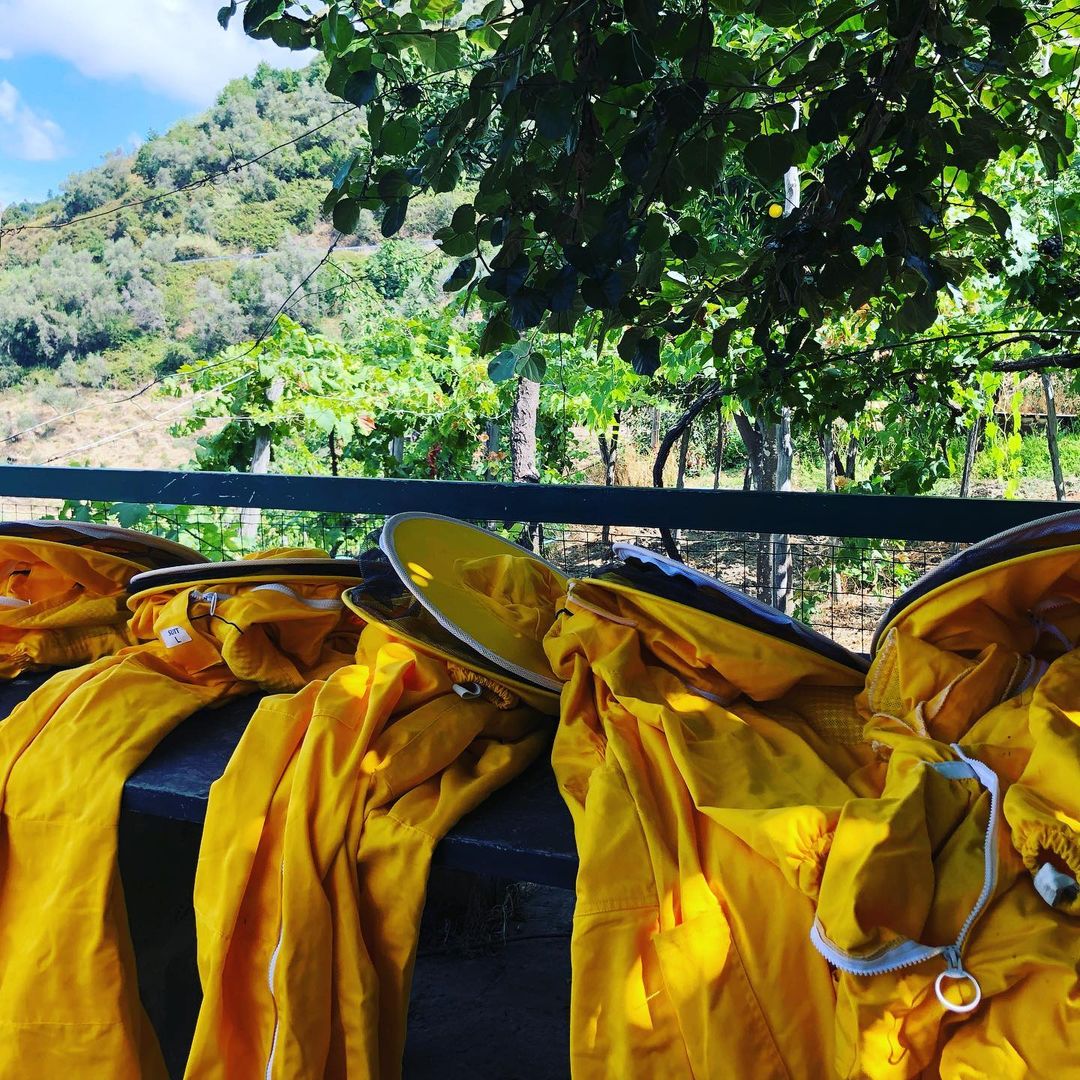Assurer la sécurité et le confort : L'évolution des équipements et vêtements de protection.
In vari settori e professioni, i dispositivi di protezione e gli indumenti svolgono un ruolo fondamentale nel garantire la sicurezza e il benessere dei lavoratori. Nel corso degli anni, i progressi nella tecnologia, nei materiali e nel design hanno trasformato il panorama dei dispositivi di protezione, offrendo una protezione migliorata e un comfort migliorato. In questo post del blog, esploreremo l'evoluzione dei dispositivi di protezione e degli indumenti, evidenziando le innovazioni chiave e discutendo il loro impatto sulla sicurezza dei lavoratori.
Materiali avanzati:
a) Tessuti leggeri e durevoli: i tradizionali indumenti protettivi ingombranti e pesanti hanno lasciato il posto a tessuti leggeri che offrono un'eccellente durata e resistenza ai pericoli. Materiali come fibre aramidiche, tessuti sintetici ad alte prestazioni e laminati avanzati forniscono una protezione migliorata senza compromettere la mobilità.
b) Tessuti ignifughi: lo sviluppo di materiali ignifughi ha notevolmente migliorato la sicurezza dei lavoratori in ambienti ad alto rischio. I tessuti trattati con sostanze chimiche ignifughe o tessuti da fibre intrinsecamente ignifughe offrono protezione contro calore, fiamme e pericoli termici.
Design ergonomico:
a) Mobilità migliorata: l'equipaggiamento protettivo si è evoluto per dare priorità al design ergonomico, consentendo ai lavoratori di muoversi liberamente e svolgere compiti senza vincoli. Pannelli flessibili, giunti articolati e caratteristiche regolabili sono diventati comuni, riducendo l'affaticamento e aumentando la produttività complessiva.
b) Traspirabilità e gestione dell'umidità: l'accumulo di calore e umidità può causare disagio e compromettere le prestazioni dei lavoratori. Gli indumenti protettivi moderni incorporano tessuti traspiranti, proprietà di assorbimento dell'umidità e sistemi di ventilazione, garantendo un comfort ottimale anche durante attività faticose.
Caratteristiche di sicurezza integrate:
a) Protezione dagli impatti: settori come l'edilizia e la produzione richiedono protezione contro impatti e cadute. L'equipaggiamento protettivo ora include imbottiture integrate, materiali antiurto e rinforzi nelle aree vulnerabili per ridurre al minimo il rischio di lesioni.
b) Elementi riflettenti: in ambienti con scarsa illuminazione o molto trafficati, la visibilità è fondamentale per la sicurezza dei lavoratori. Elementi riflettenti, come strisce o toppe, sono stati incorporati negli indumenti protettivi per migliorare la visibilità e ridurre il rischio di incidenti.
Progressi tecnologici:
a) Attrezzatura con sensori: la tecnologia all'avanguardia ha facilitato l'integrazione di sensori nelle attrezzature di protezione. Questi sensori possono monitorare i segni vitali, le condizioni ambientali e l'esposizione ai pericoli, fornendo dati in tempo reale per migliorare la sicurezza dei lavoratori e consentire un intervento tempestivo in caso di emergenza.
b) Realtà aumentata (AR): la tecnologia AR ha trovato applicazioni in occhiali e caschi protettivi, offrendo ai lavoratori informazioni preziose e migliorando la consapevolezza della situazione. I display AR possono fornire dati, istruzioni o avvisi di pericolo in tempo reale, migliorando l'efficienza e la sicurezza sul lavoro.
Prospettive future:
Il futuro delle attrezzature e degli indumenti protettivi ha un immenso potenziale per ulteriori progressi. Ecco alcune aree da tenere d'occhio:
a) Nanotecnologia: i nanomateriali si dimostrano promettenti nella creazione di attrezzature protettive con proprietà eccezionali, come maggiore resistenza, superfici autopulenti o migliore resistenza ai pericoli chimici e biologici.
b) Tessuti intelligenti: l'integrazione di tessuti intelligenti nelle attrezzature protettive sta guadagnando slancio. Questi tessuti possono monitorare le condizioni fisiologiche, rilevare l'esposizione a sostanze pericolose o fornire benefici terapeutici, contribuendo a migliorare la sicurezza e il benessere dei lavoratori.
c) Soluzioni sostenibili: l'attenzione alla sostenibilità sta guidando lo sviluppo di dispositivi e indumenti protettivi ecocompatibili. Ciò include l'utilizzo di materiali riciclabili o biodegradabili, la riduzione degli sprechi durante la produzione e l'implementazione dei principi dell'economia circolare.
Materiali avanzati:
a) Tessuti leggeri e durevoli: i tradizionali indumenti protettivi ingombranti e pesanti hanno lasciato il posto a tessuti leggeri che offrono un'eccellente durata e resistenza ai pericoli. Materiali come fibre aramidiche, tessuti sintetici ad alte prestazioni e laminati avanzati forniscono una protezione migliorata senza compromettere la mobilità.
b) Tessuti ignifughi: lo sviluppo di materiali ignifughi ha notevolmente migliorato la sicurezza dei lavoratori in ambienti ad alto rischio. I tessuti trattati con sostanze chimiche ignifughe o tessuti da fibre intrinsecamente ignifughe offrono protezione contro calore, fiamme e pericoli termici.
Design ergonomico:
a) Mobilità migliorata: l'equipaggiamento protettivo si è evoluto per dare priorità al design ergonomico, consentendo ai lavoratori di muoversi liberamente e svolgere compiti senza vincoli. Pannelli flessibili, giunti articolati e caratteristiche regolabili sono diventati comuni, riducendo l'affaticamento e aumentando la produttività complessiva.
b) Traspirabilità e gestione dell'umidità: l'accumulo di calore e umidità può causare disagio e compromettere le prestazioni dei lavoratori. Gli indumenti protettivi moderni incorporano tessuti traspiranti, proprietà di assorbimento dell'umidità e sistemi di ventilazione, garantendo un comfort ottimale anche durante attività faticose.
Caratteristiche di sicurezza integrate:
a) Protezione dagli impatti: settori come l'edilizia e la produzione richiedono protezione contro impatti e cadute. L'equipaggiamento protettivo ora include imbottiture integrate, materiali antiurto e rinforzi nelle aree vulnerabili per ridurre al minimo il rischio di lesioni.
b) Elementi riflettenti: in ambienti con scarsa illuminazione o molto trafficati, la visibilità è fondamentale per la sicurezza dei lavoratori. Elementi riflettenti, come strisce o toppe, sono stati incorporati negli indumenti protettivi per migliorare la visibilità e ridurre il rischio di incidenti.
Progressi tecnologici:
a) Attrezzatura con sensori: la tecnologia all'avanguardia ha facilitato l'integrazione di sensori nelle attrezzature di protezione. Questi sensori possono monitorare i segni vitali, le condizioni ambientali e l'esposizione ai pericoli, fornendo dati in tempo reale per migliorare la sicurezza dei lavoratori e consentire un intervento tempestivo in caso di emergenza.
b) Realtà aumentata (AR): la tecnologia AR ha trovato applicazioni in occhiali e caschi protettivi, offrendo ai lavoratori informazioni preziose e migliorando la consapevolezza della situazione. I display AR possono fornire dati, istruzioni o avvisi di pericolo in tempo reale, migliorando l'efficienza e la sicurezza sul lavoro.
Prospettive future:
Il futuro delle attrezzature e degli indumenti protettivi ha un immenso potenziale per ulteriori progressi. Ecco alcune aree da tenere d'occhio:
a) Nanotecnologia: i nanomateriali si dimostrano promettenti nella creazione di attrezzature protettive con proprietà eccezionali, come maggiore resistenza, superfici autopulenti o migliore resistenza ai pericoli chimici e biologici.
b) Tessuti intelligenti: l'integrazione di tessuti intelligenti nelle attrezzature protettive sta guadagnando slancio. Questi tessuti possono monitorare le condizioni fisiologiche, rilevare l'esposizione a sostanze pericolose o fornire benefici terapeutici, contribuendo a migliorare la sicurezza e il benessere dei lavoratori.
c) Soluzioni sostenibili: l'attenzione alla sostenibilità sta guidando lo sviluppo di dispositivi e indumenti protettivi ecocompatibili. Ciò include l'utilizzo di materiali riciclabili o biodegradabili, la riduzione degli sprechi durante la produzione e l'implementazione dei principi dell'economia circolare.





























